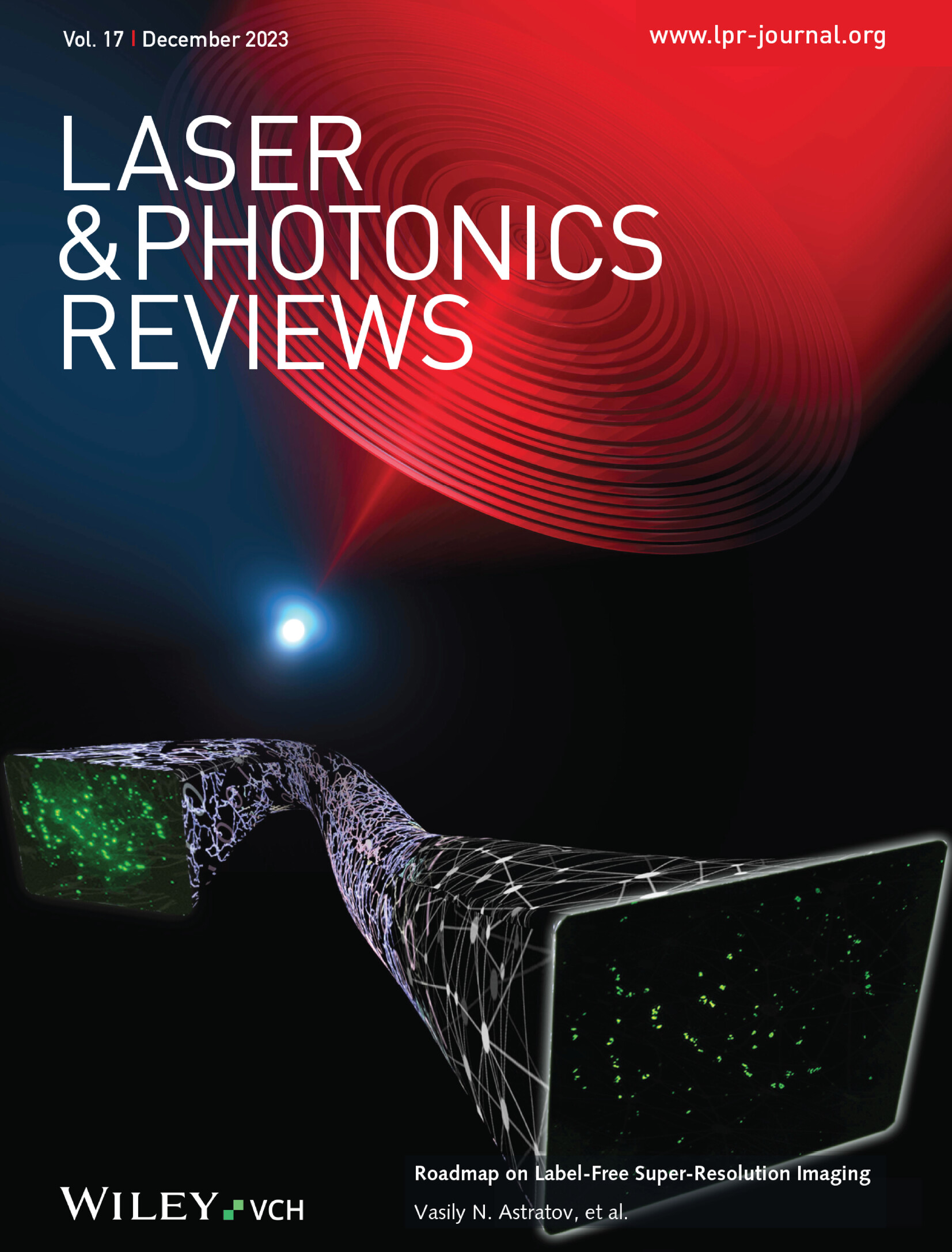High Efficiency Non-Doped Organic Light Emitting Diodes Based on Pure Organic Room Temperature Phosphorescence by High-Lying Singlet Exciton Fission
IF 9.8
1区 物理与天体物理
Q1 OPTICS
引用次数: 0
Abstract
Heavy-metal-free pure organic room temperature phosphorescence (ORTP) holds great potential in the field of organic optoelectronic devices owing to low economic cost, simple preparation techniques, and high exciton utilization. However, it is still filled with challenges in realizing high efficiency organic light-emitting diodes (OLEDs) and exploring the internal physical mechanism based on these ORTP molecules. Here, a high-performance OLED induced by an unexpected interfacial spin-mixing process between the ORTP molecule and interlayers is demonstrated, and the high efficiency electroluminescence (EL) mechanism is studied through magneto–electroluminescence (MEL) and magneto–photoluminescence (MPL) measurements. The steady-state and transient PL properties imply that the interfacial effect is related to a high-lying singlet fission (HLSF) process in the ORTP molecule itself. Further, the HLSF process and the corresponding energy level position are confirmed by the incident wavelength- and temperature-dependent PL spectra and the magnetic-field-dependent transient PL. Finally, by optimizing the interfacial material adjacent to the emissive layer to utilize this interfacial spin mixing effect, a high-efficiency non-doped ORTP-OLED with external quantum efficiency of 16% and CIE coordinates of (0.27, 0.49) is developed. The proposed mechanism during the EL process will give insight to produce more efficient OLEDs based on ORTP materials in the future.

基于高低单质激子裂变的纯有机室温磷光的高效无掺杂有机发光二极管
无重金属纯有机室温磷光(ORTP)具有经济成本低、制备技术简单、激子利用率高等特点,在有机光电器件领域具有巨大潜力。然而,在实现高效有机发光二极管(OLED)和探索基于这些 ORTP 分子的内部物理机制方面,它仍然充满挑战。本文展示了一种由 ORTP 分子和夹层之间意想不到的界面自旋混合过程诱导的高性能有机发光二极管,并通过磁电致发光(MEL)和磁致发光(MPL)测量研究了其高效电致发光(EL)机制。稳态和瞬态 PL 特性表明,界面效应与 ORTP 分子本身的高低单裂变(HLSF)过程有关。此外,入射波长和温度相关的聚光光谱以及磁场相关的瞬态聚光也证实了 HLSF 过程和相应的能级位置。最后,通过优化邻近发射层的界面材料以利用这种界面自旋混合效应,开发出了一种高效率的非掺杂 ORTP-OLED 光源,其外部量子效率为 16%,CIE 坐标为(0.27, 0.49)。所提出的电致发光过程中的机理将为未来生产基于 ORTP 材料的更高效有机发光二极管提供启示。
本文章由计算机程序翻译,如有差异,请以英文原文为准。
求助全文
约1分钟内获得全文
求助全文
来源期刊
CiteScore
14.20
自引率
5.50%
发文量
314
审稿时长
2 months
期刊介绍:
Laser & Photonics Reviews is a reputable journal that publishes high-quality Reviews, original Research Articles, and Perspectives in the field of photonics and optics. It covers both theoretical and experimental aspects, including recent groundbreaking research, specific advancements, and innovative applications.
As evidence of its impact and recognition, Laser & Photonics Reviews boasts a remarkable 2022 Impact Factor of 11.0, according to the Journal Citation Reports from Clarivate Analytics (2023). Moreover, it holds impressive rankings in the InCites Journal Citation Reports: in 2021, it was ranked 6th out of 101 in the field of Optics, 15th out of 161 in Applied Physics, and 12th out of 69 in Condensed Matter Physics.
The journal uses the ISSN numbers 1863-8880 for print and 1863-8899 for online publications.

 求助内容:
求助内容: 应助结果提醒方式:
应助结果提醒方式:


